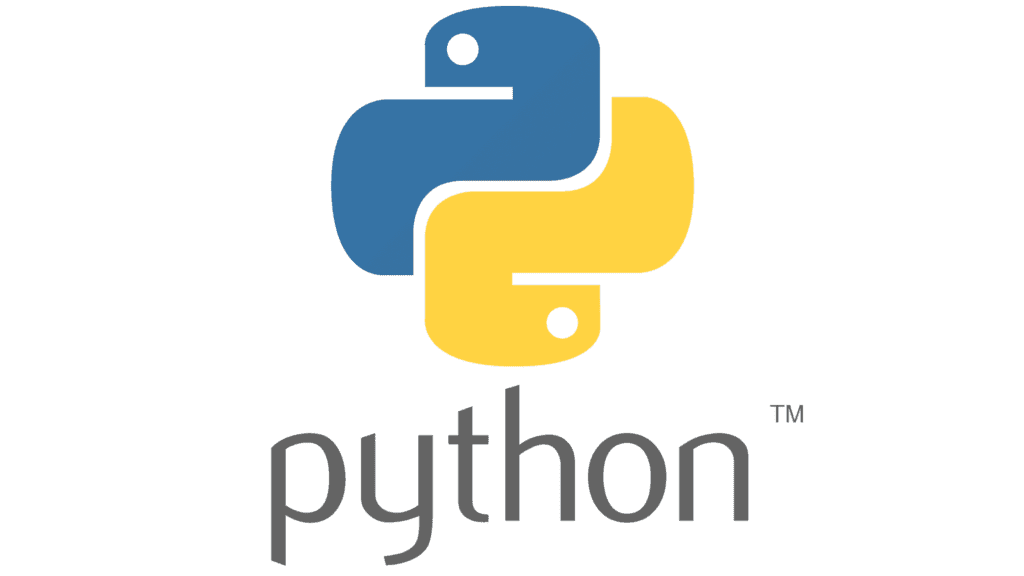The domain of Data Science brings with itself a variety of scientific tools, processes, algorithms, and knowledge extraction systems from structured and unstructured data alike, for identifying meaningful patterns in it.
Data Science is at the forefront of the recent innovations leading the Information Technology sector. Being a key factor in the changes brought by Artificial Intelligence and its slew of intelligent tools, Data Science has helped analysts and researchers by equipping them with powerful tools and techniques to extract crucial insights from the data.
As the field of Data Science becomes more competitive with the day, the need to keep up with the latest innovations increases. For you to make the most out of your data using Data Science, you must upskill yourself with a variety of frequently used tools and skills so that you can confidently answer the question at hand backed with some solid information. The goal behind this write-up is to familiarize you with some of the latest Data Science skills that are in-demand in 2020.
Data science is the discipline of making data useful
Data Science Books You Must Read in 2020
Data Science Trends for 2020
“We’re entering a new world in which data may be more important than software.” —
– Tim O’Reilly

Data Science deals with the extraction of insightful and game-changing knowledge from various sources of data regardless of its age, using a range of methods, algorithms, and systems. If you want to stay competitive in this rapidly evolving domain, you need to regularly update your skills with the latest changes.
In the following section, we will share the top Data Science skills that not only a practicing Data Scientist would benefit from, but also anyone who’s passionate about working his way around large volumes of data.
1. GitHub

If you code anything at all, we’re sure you must’ve heard about GitHub. GitHub is among the most commonly used tools by the developers today after Stack Overflow. GitHub not only allows the developers to effortlessly host their code online for simple anytime access but also offers version controlling to effectively manage their code’s numerous build channels and versions.
Being a powerful tool for developers, GitHub also offers several enterprise-grade features such as secure collaboration among team members with access control, integration support for hundreds of services, and a welcoming community supporting both individual developers and businesses.
2. Agile
Agile is a software development and a project management model that acknowledges and responds to the changes in the software development life cycle by delivering smaller but functional iterations rather than developing the entire project at once. Agile follows a systematic approach before delivering an iteration by organizing regular team meetings to bring everyone on the same page.
As the project is being gradually transformed into the final deliverable, the development team acknowledges any feedback or change request and implements them before completing each iteration.
As a data scientist, you can use Agile to plan and prioritize your project’s milestones by clearly defining them with estimated timelines, and finally, demo everything and gather feedback from the team about what went wrong.
3. Programming(Python/R)

Readout these articles too —
Top Python Libraries for Data Science
Top R Libraries for Data Science
Top Programming Languages for AI Engineers in 2020
4. SQL
Now in the previous pointer, we discussed the importance of programming languages in Data Science, but what’s equally necessary is the ability to extract and handle raw and untouched data from hundreds of sources.
SQL or Structured Query Language is what interacts directly with the silos of data and transforms them into useful bits of information, which are then used by the developers.
SQL offers various advanced data manipulation techniques via its queries that allow developers to not only restructure the data to their liking but also to process it as well. You could say that apart from being able to code, a data scientist must also have a strong knowledge of SQL to derive the necessary meaningful insights. A data scientist skilled in both can smartly make use of the various libraries available in, say, Python or R, to achieve results faster with SQL.
5. Preparing for Production
Modern data scientists are always writing code, whether it is a makeshift code for a business stakeholder or a new Machine Learning model, but not everyone is code-savvy. It is quite possible that a small percentage of data scientists may not have had sufficient exposure to software engineering, resulting in a poor code.
It’s a known fact that production code is touched upon by several developers throughout its life cycle on the live environment, which is why it must follow well-defined coding standards to maintain code reproducibility and modularity while keeping everything well-documented.
Data scientists can overcome this obstacle of writing poor code for production by targeting the above-mentioned criteria. No doubt that this will seem challenging at first, but once you start incorporating these aspects into your code, you will see a radical improvement in the quality of your work.
Best Data Science Blogs to Follow in 2020
6. NLP, Neural Networks and Deep Learning

Looking at the rate at which AI is evolving, it is becoming increasingly necessary for a data scientist to have a strong understanding of Natural Language Processing, Neural Networks, and Deep Learning as their use becomes more widespread.
NLP plays a key role in managing and processing automated interaction between humans and computers. Your best examples here would include chatbots, voice assistants, email filtering tools, language translators, and more.
Artificial Neural Network simulates the network of neurons in a human brain and helps solve complex problems. Some of its real-life applications can be found in predicting the stock values, image compression techniques, face and speech recognition.
Whereas Deep Learning uses Artificial Neural Networks on an even deeper scale with multiple layers to solve problems such as fraud detection, pixel restoration, coloring black & white images, to name a few.
7. Math and Statistical Skills
Maths and Statistics are one of the prerequisites of Data Science. You’d be surprised to know that a majority of processes, algorithms, models, and systems involved in Data Science demand a strong mathematical and statistical background.
Acquiring this knowledge will not only allow you to understand the logic behind several of these algorithms and methods but will also make sure that your insights are accurate, trustworthy, and free from outliers. More so, you’ll be able to explore the data in greater detail to figure out any hidden patterns and trends, and find any relationship or dependencies between the variables in your data.
8. Machine Learning
Data Science is a broader term that includes Machine Learning. To put it simply, Data Science deals with the extraction of knowledge from the data, which can then be used as an input dataset in your Machine Learning models. From that knowledge, you can train your systems to perform actions based on identified patterns and even make predictions using the system.
The modern-day data scientist is very much expected to have an understanding of the concepts and algorithms involved in Machine Learning, such as the various Supervised and Unsupervised Learning algorithms. As you can apply them without much hassle using the various libraries available in Python or R, you should be able to identify which problems require what type of solution.
Machine Learning Books You Must Read in 2020
The 12 Best And Free Online Machine Learning Courses
9. AutoML
Machine Learning has grown considerably in the past few years thanks to the various innovations in the industry, but it still relies on human experts to carry out the various tasks involved. For data scientists new to Machine Learning, applying and optimizing the models might seem challenging at first.
To overcome this, AutoML was developed, which takes over the tasks involved in applying a Machine Learning model to a real-life problem, such as preprocessing and cleaning of data, selecting the right features, optimizing the model’s hyperparameters, problem checking, and analyzing the results. By automating tedious tasks like these, a data scientist can save an ample amount of time without having to worry about training even the most complicated of the Machine Learning models, ultimately increasing productivity even with a small team.
See also —
10 Best Examples Of Artificial Intelligence In Everyday Life
10. Data Visualization
Data Visualization is one of the key stages in the entire Data Science process as it gives us the first glance at the data in a graphical style by using a variety of visualizations such as charts, graphs, histograms. It is this process where the data begins to portray some pattern, and we start drawing meaningful insights from it to solve the problem at hand.
Requiring little to no technical skills, these visualizations are perfect to be sent to various stakeholders in the organization. To create informative visualizations for your data, you must have some knowledge about programming languages such as R and Python, along with their relevant visualization packages.
11. Database Management

A DBMS or Database Management System essentially supports SQL that allows the developers to create, manipulate and view structured relational data, but on top of that, DBMS adds the creation, management, and manipulation of databases and tables that store the data.
Additionally, a DBMS can also act as a bridge between your application that is requesting the data and the data, resting comfortably in a data store somewhere. Apart from that, a DBMS can offer several useful features to a data scientist, some of them include a multi-user environment, the ability to access and even modify the structure of the data at a granular level, backup and restoring of databases.
12. Cloud and Big Data
Organizations love running their businesses on Cloud, and they’re actively switching from on-premises infrastructure to Cloud Computing.
Do you know why?
It is because Cloud offers powerful yet affordable computing resources for complex and resource-hungry domains, such as Artificial Intelligence, Data Science, Machine Learning. Another reason behind this is that some of the leading players in the industry at the forefront of innovations, such as Microsoft, Amazon, Google, IBM, and NVIDIA, are actively working on making these services easy to use for everyone.
Big Data also benefits significantly from the switch to Cloud Computing as it allows data scientists to remotely manage stored data across nodes spread globally and scale their data processes without worrying about the restrictions on resources.
More Technical & Non-Technical Data Science Skills —
- Data Wrangling
- Data Analytics
- Data Storytelling Skills
- Data Ingestion
- Multivariable Calculus & Linear Algebra
- Data Intuition
- Effective business communication
- Experimentation
- Business acumen
- Hadoop Platform
- Business Intelligence
Conclusion
As more and more businesses start adopting modern data science techniques, the need for skilled data scientists increases. To cater to this expanding demand, we shared 12 of the must-have skills that will not only enhance your data extraction and handling skills but also greatly improve your analysis skills to gather better insights. It is a proven fact that you continue learning throughout your life, and in an evolving industry like Data Science, the more experienced and skilled you are with the current-gen tools and techniques in Data Science, the better your chances of snagging a job at a top profile in a reputed and evolving company. If you made it to the end, do share your thoughts on these skills.
Note: To eliminate problems of different kinds, I want to alert you to the fact this article represent just my personal opinion I want to share, and you possess every right to disagree with it.








